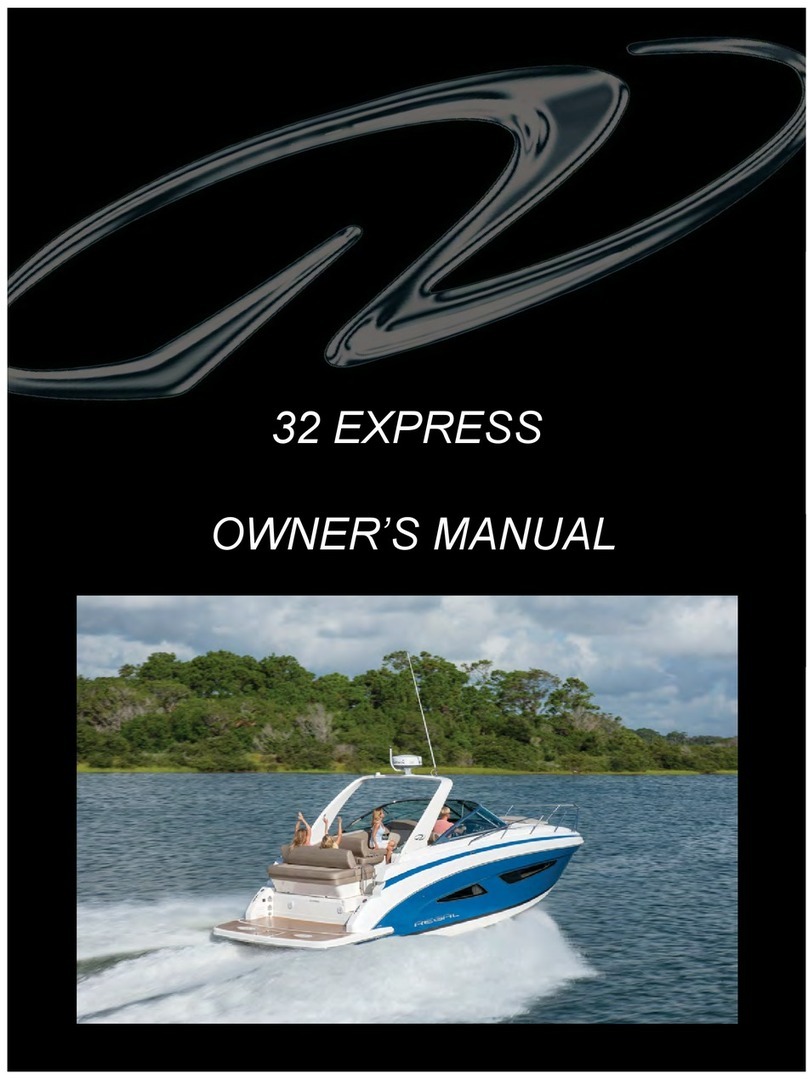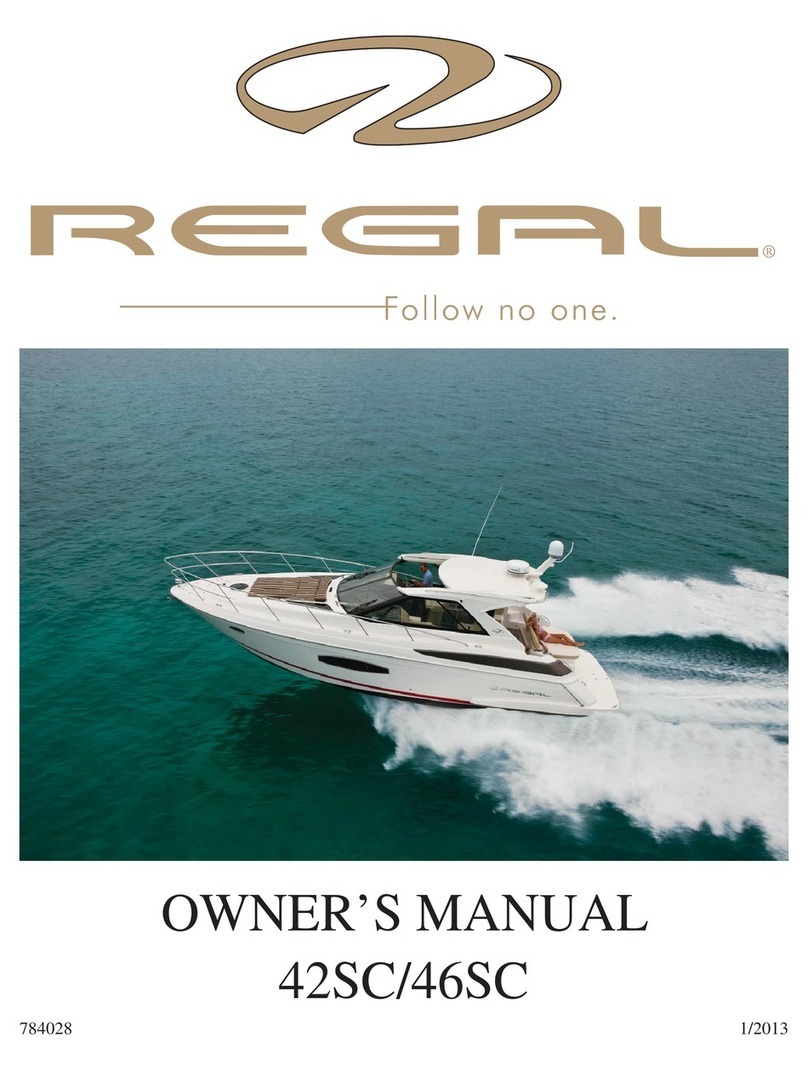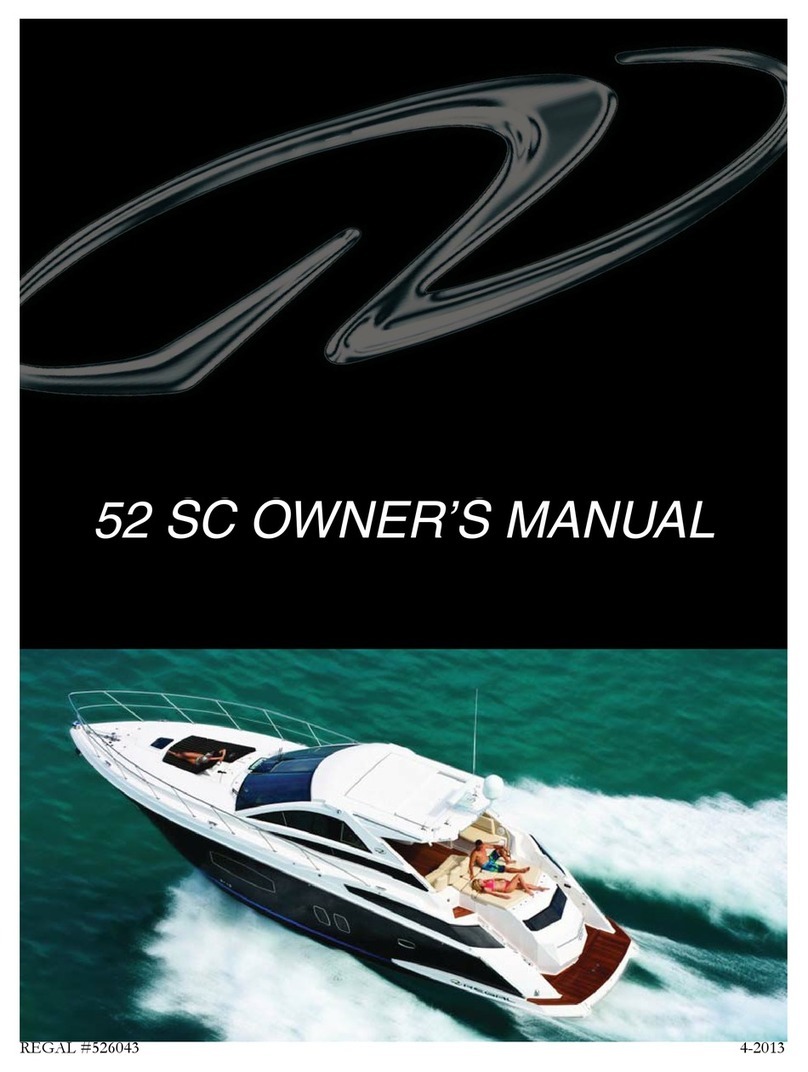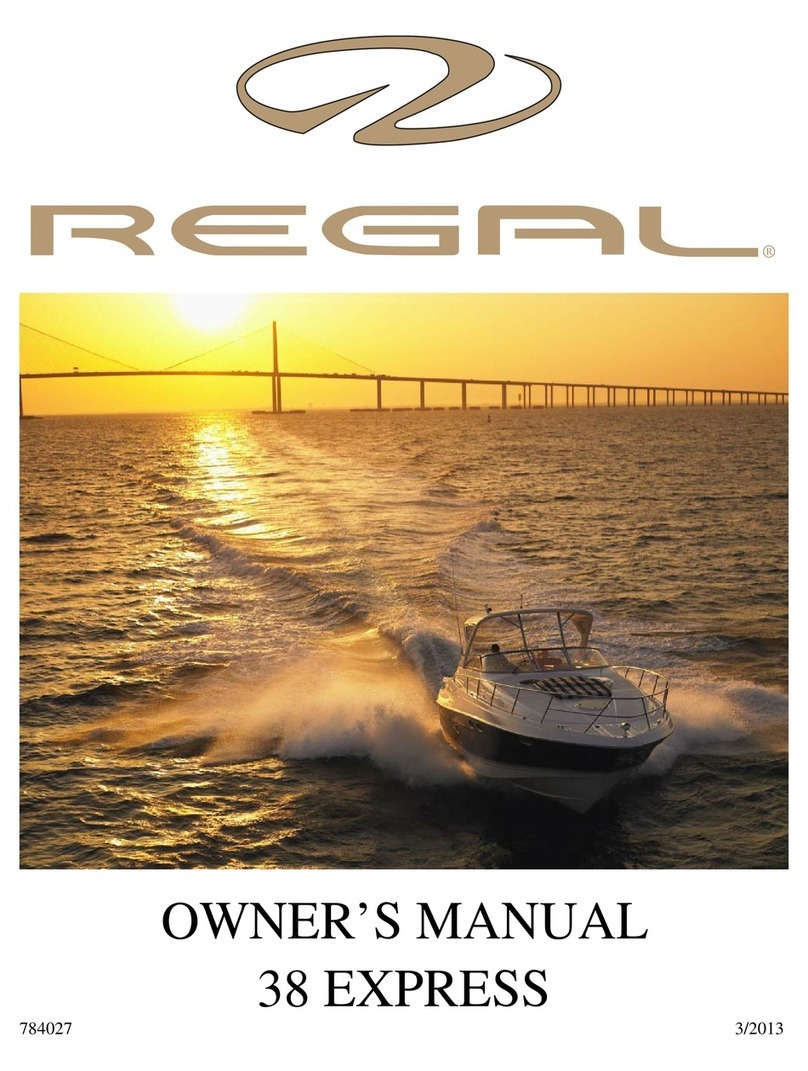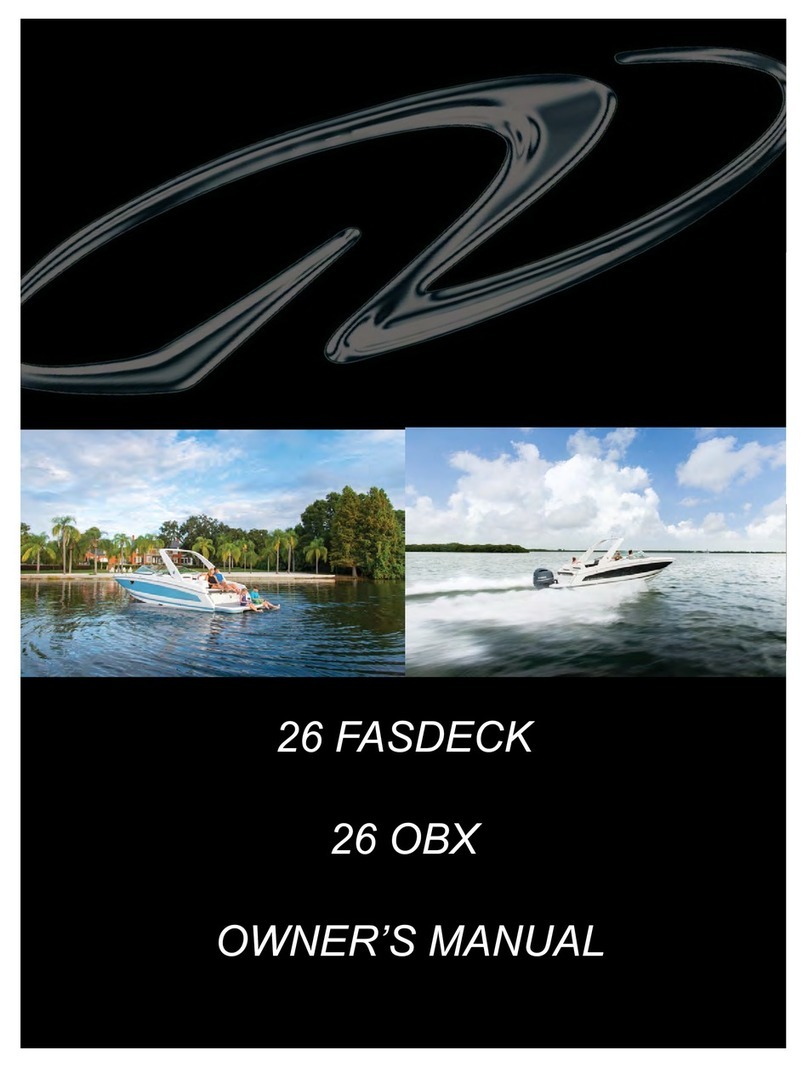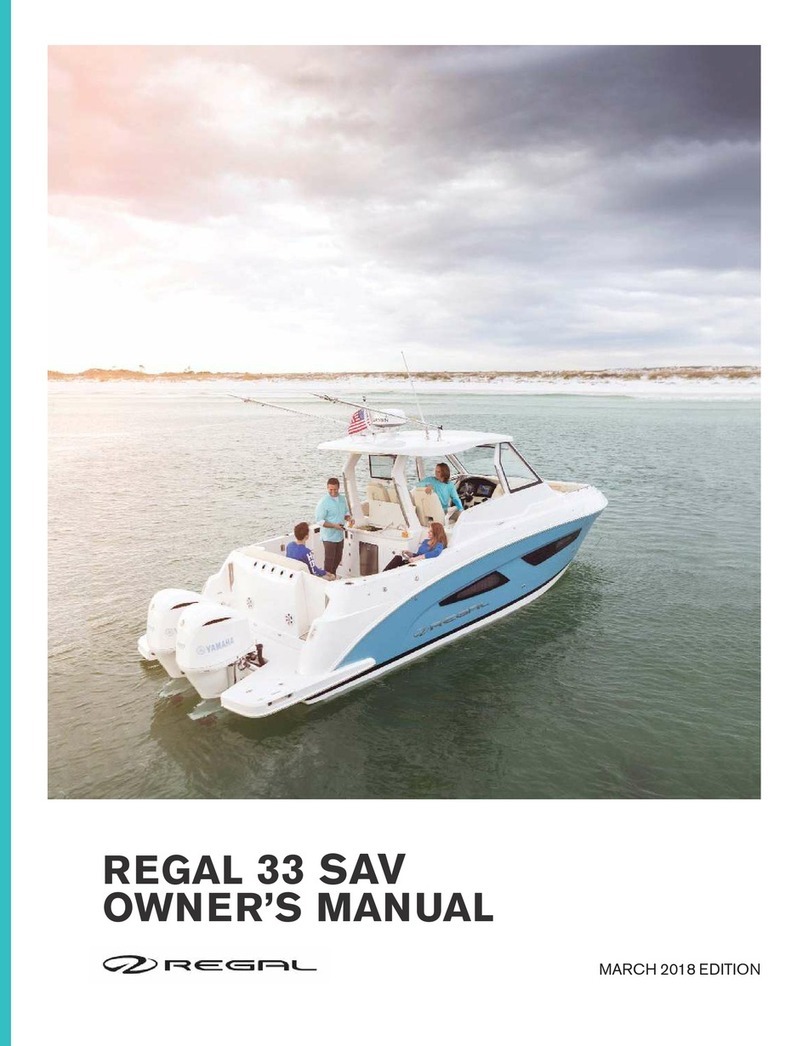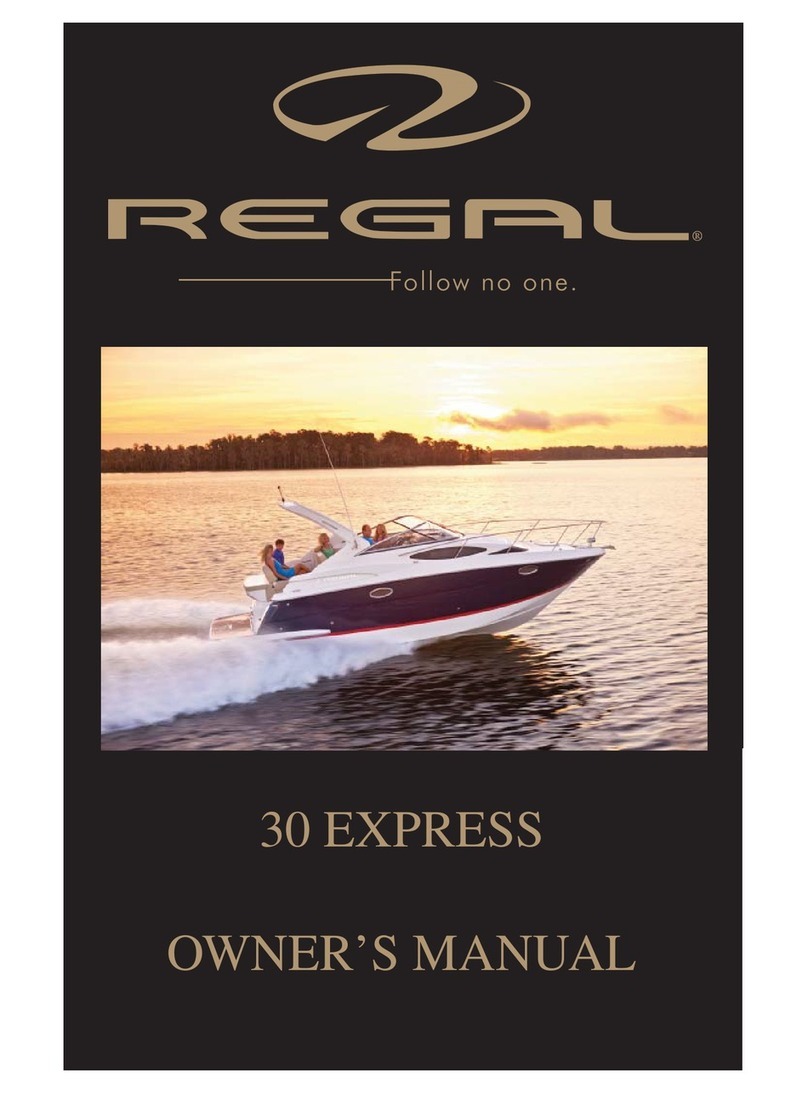
6
Electrical System
Introduction
In this section, basic DC (direct current) is
introduced. Select electrical components are
reviewed along with their location and function
within the electrical system.
For more complicated issues outside the scope of
this manual contact your closet Regal dealer. They
have undergone extensive training on the Regal
boat systems.
Be sure to read and follow any danger, warning,
caution, or notice labels in reference to the
vessel’s electrical system or individual equipment
components. Also, refer to the owner’s information
packet for further product information or the internet.
PREVENT SEVERE INJURY OR DEATH!
DISCONNECT
ALL ELECTRICAL POWER SOURCES
BEFORE ATTEMPTING
TO REPAIR OR REPLACE
ANY ELECTRICAL COMPONENT.
WARNING
DC Current
Your Regal boat uses 12 volt DC electricity otherwise
known as direct current. It is called DC because it
flows only one way in a circuit. Specifically to name
a few, helm gauges, batteries, battery cables, engine
electrical components, engine wiring harnesses,
dash switches, selected lighting, shower sump,
bilge pumps, and vacuum toilets are all components
using a 12 volt DC system.
In the domestic DC system the red wire is
designated as the “hot” or conductor wire and the
black wire is referred to as the ground wire. At times
other current carrying wires are color coded such as
blue to identify their use as a low voltage conductor.
This is especially helpful in troubleshooting and
adding additional equipment. Be sure to review
the wiring schematics in the drawing section of the
technical chapter.
Direct current is stored in the ship’s battery(ies)
and produced through the engine alternator while
the engine is running or by the battery charger at
shore. Normal DC voltage is between 12 and 15
volts. Lower or higher readings could indicate a
charging malfunction or a weak battery.
Note that current specifications for alternator output
is around 105 amps depending on engine model .The
forward bilge pump and automatic float switch are
continuously on with the bilge pump switch in the
middle or “off” position. Should a leak develop with
the operator away from the vessel the bilge pump
will continue to pump bilge water overboard until
of course the battery goes dead.
AVOID CHARGING SYSTEM DAMAGE!
DO NOT TURN
BATTERY SWITCH TO THE “OFF”
POSITION WITH THE ENGINE RUNNING.
CAUTION






